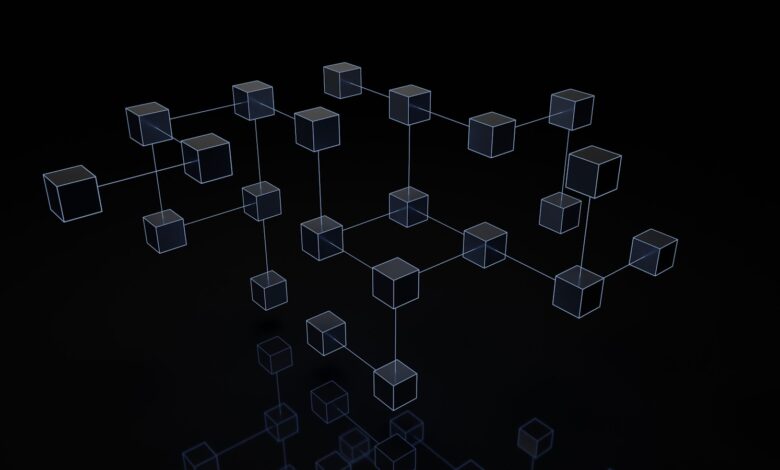Blockchain settlements – instant transaction finality

Real-time clearing mechanisms eliminate the delay traditionally associated with gross settlement systems by enabling payments to be irrevocably confirmed within seconds. This reduces counterparty risk and liquidity requirements, providing participants with immediate certainty over fund transfers. Implementing distributed ledger technology for settlement processes enhances transparency while maintaining high throughput necessary for large-scale financial networks.
Finalizing exchanges on-chain removes the dependency on intermediaries, thereby streamlining reconciliation and reducing operational costs. The synchronization of multiple ledgers ensures that asset transfers occur simultaneously, preventing settlement failures and credit exposures common in deferred netting models. Such solutions deliver transaction execution with guaranteed immutability, fostering trust among counterparties.
Adopting decentralized platforms for payment finalization supports integration with existing banking infrastructures without compromising speed or security. Real-time validation allows institutions to optimize capital allocation and comply with evolving regulatory frameworks targeting systemic risk mitigation. Empirical data from pilot programs indicate a significant decline in settlement times–from hours or days down to minutes–enabling smoother liquidity management across global markets.
Blockchain settlements: instant transaction finality [Digital Finance digital-finance]
For effective gross settlement systems, achieving real-time clearing and confirmation is indispensable. Distributed ledger technology enables the elimination of intermediaries by allowing direct peer-to-peer exchanges that confirm asset transfers within seconds. This reduces counterparty risk significantly compared to traditional netting methods, where finality can take hours or even days to establish.
Unlike conventional frameworks relying on batch processing and deferred netting, decentralized protocols provide irrevocable record updates upon block inclusion. This guarantees that once a data entry is appended to the chain, its settlement status cannot be reversed or disputed. Such deterministic closure accelerates liquidity flows and enhances capital efficiency across financial markets.
Core Technical Mechanisms Ensuring Rapid Closure
The underlying cryptographic consensus algorithms such as Proof of Stake (PoS) or Byzantine Fault Tolerant (BFT) protocols underpin quick confirmation times by reaching agreement on ledger state in near real-time. Networks like Solana and Avalanche demonstrate sub-second finalization through parallelized validation processes, enabling instantaneous clearing without compromising security.
Moreover, atomic settlement constructs coordinate multiple ledgers simultaneously, preventing partial execution risks prevalent in cross-chain operations. These mechanisms facilitate synchronized recording of asset exchange events across different platforms, ensuring consistent and immediate recognition of value transfer between parties.
- Real-world implementations: JPM Coin’s integration with Quorum demonstrates permissioned blockchain utility for intra-bank clearing with millisecond latency.
- Cross-border payments: RippleNet leverages distributed registries to shorten foreign exchange settlement cycles from days to seconds.
The shift from deferred bilateral reconciliation towards continuous gross accounting models afforded by distributed ledgers redefines operational paradigms for financial institutions. Instantaneous validation removes the need for collateral buffers traditionally required during unsettled periods, freeing up working capital and reducing systemic exposure.
The regulatory environment increasingly acknowledges the advantages of immutable ledger states verified in real time. Compliance frameworks evolve to incorporate these capabilities within anti-money laundering (AML) policies and know-your-customer (KYC) procedures embedded directly into transactional layers. This convergence enhances transparency without sacrificing speed or throughput.
Evolving financial architectures integrating decentralized registers promote resilience against operational failures inherent in centralized clearinghouses. By distributing verification roles across independent validators worldwide, these systems mitigate risks related to single points of failure while delivering rapid asset transfer completion indispensable for modern finance ecosystems.
Mechanisms Ensuring Instant Transaction Finality
Ensuring immediate settlement in decentralized ledger systems requires consensus protocols that provide irrevocable confirmation of operations. Practical Byzantine Fault Tolerance (PBFT) and its derivatives enable near-real-time clearing by allowing a predetermined quorum of validators to agree on state updates without waiting for additional confirmations. This approach eliminates risks of rollback, guaranteeing that once an entry is recorded, it cannot be altered or reversed.
Another critical mechanism involves the use of finality gadgets layered atop proof-of-stake consensus algorithms. These components validate blocks instantaneously after their creation, accelerating clearing processes by confirming the canonical ledger state without probabilistic delays. For instance, protocols like Ethereum’s Casper FFG integrate checkpoints finalized through validator consensus, substantially reducing latency between submission and definitive settlement.
Technical Approaches to Settlement Assurance
Sharding architectures contribute to faster reconciliation by partitioning data and processing loads across multiple parallel chains, each capable of independently validating operations. This method improves throughput while maintaining consistency through cross-shard communication protocols designed to synchronize states effectively. The implementation in networks such as Polkadot demonstrates how interlinked parachains can achieve rapid confirmation times despite distributed processing.
Zero-knowledge proofs represent an emerging tool for expediting validation while preserving privacy and integrity. By generating succinct cryptographic attestations off-chain, they allow participants to verify correctness instantly without re-executing every computational step. zk-rollups employed in Layer 2 solutions exemplify this concept by aggregating numerous entries into a single proof submitted to the main ledger, drastically enhancing clearing speed and reducing on-chain load.
- Deterministic finality: Consensus models ensuring a block’s acceptance is definitive immediately upon agreement.
- Validator committees: Groups chosen randomly or via staking weight to confirm batches swiftly.
- Crytographic guarantees: Mechanisms preventing double spends or forks through irreversible signatures.
The role of real-time monitoring tools cannot be overstated; they provide transparency on network state and validator behavior, enabling dynamic adjustments that maintain rapid clearance even under varying load conditions or adversarial attempts. Sophisticated telemetry platforms track confirmation latencies and fork probabilities, offering stakeholders actionable intelligence to optimize infrastructure performance.
Diversified ecosystems incorporating hybrid consensus schemes combine fast finalization with robust security assurances suitable for high-frequency financial applications. Integrations between decentralized ledgers and traditional clearinghouses illustrate potential pathways where programmable contracts automate asset transfers upon validated triggers, merging conventional finance stability with innovative operational speed at scale.
Impact on Cross-Border Payments
Adopting distributed ledger technology enables gross settlement processes to occur with immediate confirmation, significantly reducing the latency traditionally associated with cross-border transfers. Real-time verification and irreversible clearing of funds eliminate the need for intermediaries, which historically have introduced delays and increased costs. Financial institutions leveraging this approach benefit from enhanced liquidity management and reduced counterparty risks by eliminating settlement uncertainty.
Systems utilizing cryptographically secured ledgers provide irrevocable completion of fund transfers, ensuring that once a payment is recorded, it cannot be reversed or altered. This characteristic contrasts with conventional correspondent banking models where net settlement cycles can extend over multiple days. The acceleration to near real-time clearance supports corporate clients requiring rapid cash flow access and regulatory compliance through transparent audit trails.
Case studies involving multinational banks illustrate that implementing decentralized validation mechanisms decreases operational expenses related to reconciliation and error resolution. For instance, pilot projects integrating tokenized currency transfers across jurisdictions have demonstrated a cut in settlement times from several hours or days down to seconds, enhancing cross-border trade efficiency. Such improvements are particularly impactful in emerging markets where legacy infrastructures limit access to swift international remittances.
Regulatory frameworks adapting to these technological advancements focus on ensuring anti-money laundering (AML) compliance without compromising speed or security. Continuous monitoring tools embedded within distributed systems facilitate real-time transaction screening while maintaining swift finalization of payments. As global financial networks evolve toward these protocols, the balance between regulatory oversight and operational agility becomes a pivotal factor influencing adoption rates among traditional banking institutions and fintech innovators alike.
Reducing Counterparty Risk Through Advanced Settlement Mechanisms
Adopting real-time clearing and settlement protocols that guarantee immediate final confirmation of asset exchanges significantly diminishes counterparty exposure. By eliminating the lag between trade execution and completion, the risk of default or insolvency from either party is mitigated. This approach contrasts with delayed batch processes where unsettled obligations accumulate, increasing systemic vulnerability.
Gross settlement systems operating on distributed ledgers provide unmatched transparency and traceability during the clearing phase. Every transfer is irrevocable upon validation, ensuring that once a movement of value is recorded, reversal risks are virtually nullified. Institutions leveraging such frameworks benefit from streamlined liquidity management and reduced collateral requirements.
Mechanics of Real-Time Value Exchange in Decentralized Environments
The integration of synchronized ledger updates allows for synchronous asset delivery and payment without waiting periods. These mechanisms confirm ownership changes instantly, thus enabling true delivery-versus-payment models free from settlement uncertainty. This instantaneous certainty fosters trust among participants by guaranteeing that each exchange settles definitively at the moment it is processed.
An example includes platforms utilizing atomic swaps to execute gross settlements without intermediary intervention. Here, cryptographic proofs ensure simultaneous asset transfers across disparate networks, eliminating counterparty credit risk associated with sequential processing. Such configurations represent a paradigm shift from traditional netting cycles that extend exposure duration.
Financial institutions have reported substantial reductions in operational risk metrics after adopting these methods. According to a 2023 industry report, firms implementing continuous clearing via distributed ledgers observed a 40% decrease in failed deliveries compared to legacy batch-based systems. Furthermore, this enabled more efficient capital allocation by minimizing the need for excess reserves.
Future regulatory frameworks increasingly favor infrastructures delivering real-time irrevocability of trades to enhance systemic stability. The alignment of compliance standards with protocols ensuring prompt transfer completion reinforces market integrity while curbing contagion risks arising from unsettled claims. Consequently, investment strategies can be recalibrated with greater confidence around counterparty solvency profiles underpinned by swift gross clearance solutions.
Integration Challenges with Legacy Systems
Adopting real-time settlement mechanisms within existing gross clearing infrastructures demands a meticulous recalibration of operational workflows to accommodate immutable ledger technology. The asynchronous nature of legacy batch processing contrasts sharply with the continuous, irrevocable recording of asset exchanges, necessitating hybrid architectures that reconcile immediate confirmation with traditional reconciliation cycles.
Protocols enabling near-instantaneous finality must interface seamlessly with established middleware and message queues without compromising throughput or security. This calls for modular API layers capable of translating between distributed ledger consensus outputs and conventional settlement instructions, preserving data integrity and regulatory compliance across jurisdictional boundaries.
Key Technical Insights and Future Directions
- Real-time validation: Integrating cryptographically assured clearance processes reduces counterparty risk by eliminating the latency inherent in netting cycles, yet requires robust synchronization frameworks to prevent state divergence between on-chain records and off-chain ledgers.
- Gross versus net processing: Transitioning from netting to gross settlement models challenges capital efficiency paradigms but enhances liquidity transparency; hybrid solutions leveraging layered protocols can optimize capital allocation while maintaining speed.
- Regulatory alignment: Automated compliance embedded within programmable settlement layers offers unprecedented auditability but mandates dynamic adaptability to evolving legal standards governing cross-border asset transfers.
- Scalability constraints: Throughput bottlenecks in permissioned environments call for innovative consensus algorithms that balance finalization speed against network decentralization and fault tolerance.
The convergence of these factors implies a paradigm shift where traditional post-trade processes evolve into integrated ecosystems capable of delivering irrevocable clearance at scale. Strategic partnerships between legacy custodians and distributed ledger platforms are poised to unlock new efficiencies in liquidity management, risk mitigation, and operational transparency. Market participants should prioritize investment in interoperability protocols and adaptive middleware to future-proof their infrastructure against forthcoming regulatory mandates and competitive pressures favoring instantaneous exchange finalization.
As financial markets increasingly demand instantaneous asset transfer assurance coupled with comprehensive audit trails, the interplay between established systems and emerging technologies will define the next generation of settlements architecture–one where trust is algorithmically enforced and value moves unrestrictedly across global networks with minimal friction.






